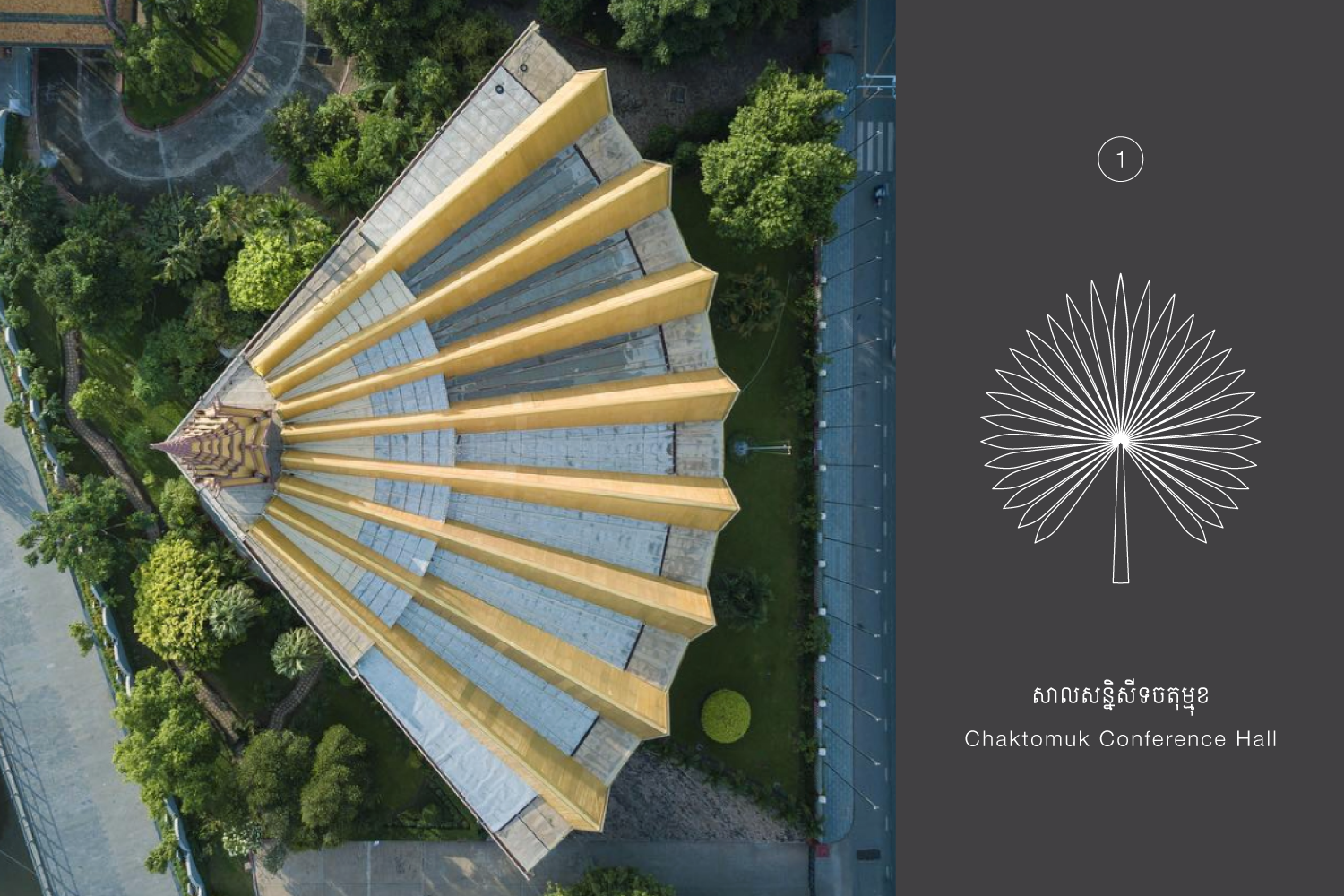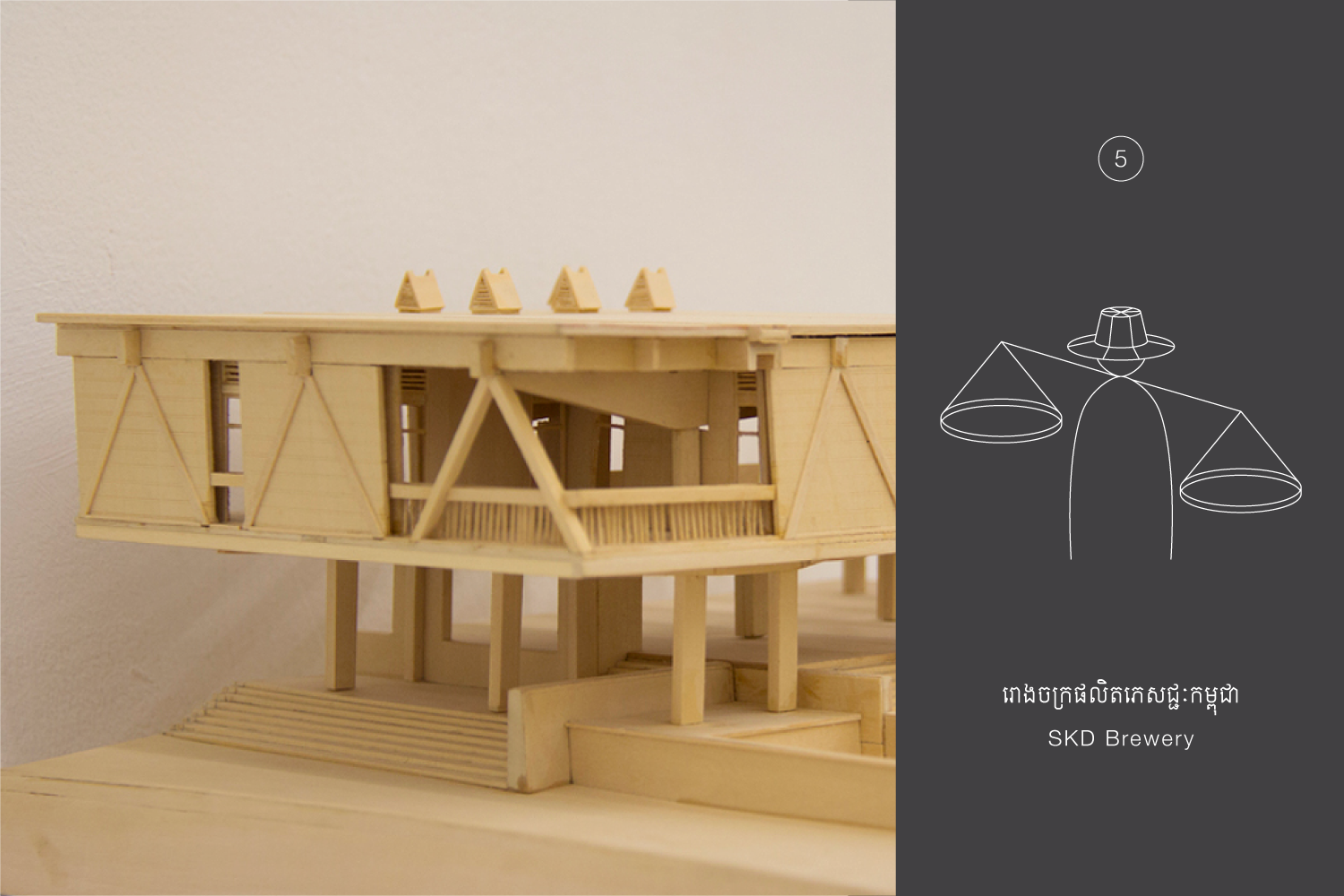Although one might not imagine it today, Phnom Penh once heralded the "little Paris of Asia" was an architectural golden child of the 1950s and 60s. Cambodia more widely, was known as a country with rich and diverse architecture since the mid-20th century, with several institutional and iconic buildings constructed across many provinces in the nation, during both the French colonial and post independence eras. One of the most notable and celebrated Khmer architects - Vann Molyvann - was particularly prolific in the 60s, many of whose projects can be found in Phnom Penh. What may be surprising, is the inspiration for several buildings borne from Khmer objects found in everyday life, both by Vann Molyvann and other architects. Here's a rundown of our top five object-inspired architectural sites in the Kingdom:
1. Chaktomuk Conference Hall
One of Vann Molyvann’s masterpieces, both functional and lyrical, and one of the most illustrious examples of New Khmer Architecture, the hall is particularly beautiful when viewed from the river perspective. From a birds-eye view, it is often cited as reminiscent of a fan.
Current usage: Public theatre
Architect and inauguration date: Vann Molyvann, 1961
Location: Sisowath Quay, Phnom Penh
Object of inspiration: Palm leaf
Photo: Thomas Cristofoletti
2. Institute of Foreign Languages
Extraordinary from 360 degrees, this small library’s circular concrete roof indented with rays appears to be floating on a circular glass wall. Inside the structure, natural light is filtered into the space by the ingenious location of windows.
Current usage: University building and library
Architect and inauguration date: Vann Molyvann, 1972
Location: Russian Federation Boulevard, Phnom Penh
Object of inspiration: Straw hat
Photo: Joshuam Chugh
3. Central market
The unique Art Deco building is a Phnom Penh landmark. The huge domed hall resembles a Babylonian ziggurat and was one of the most prominent dome structures in Southeast Asia of that period. Although the precise inspiration for the design is contested, many reference that the four wings of the building acknowledge the confluence of waters at the city.
Current usage: Wet and dry goods market
Architect and inauguration date: Initial design by Jean Desbois, 1937
Location: Calmette Street, Phnom Penh
Reference of inspiration: Convergence of four rivers - Tonlé Sap, Bassac rivers, (Upper and Lower) Mekong river
(Yes, we know rivers might not be ‘objects’ per se, but Phsar Thmey was too cool to omit!)
Photo: Travelround&found
4. Saint Michael Church
Norodom Sihanouk is said to have donated the land for this site to the church when the new town was being built, with Vann Molyvann having provided some advisory input to the design. Named after the patron saint of sailors, the church is oriented east-west on a hill overlooking the port and is elegantly simple.
Current usage: Church
Architect and inauguration date: Father Ahadobery, c. 1962
Location: Borei Kamakor District, Sihanoukville
Object of inspiration: Sails of a boat
Photo: Parish without borders
5. SKD Brewery
Estimated to have cost 500 million riel, with primary colours highlighting different pieces of equipment like pipes and vats, the reinforced brewery’s concrete structure itself has double walls with red facing brick.
Current usage: Drinks manufacturing, operated by Cambrew Ltd.
Architect and inauguration date: Vann Molyvann, 1968
Location: National Route No. 4, Sihanoukville
Object of inspiration: ‘Dong raik’ carrying-pole
Photo: The Vann Molyvann Project
If you're interested to see more, why not make a trip to some of these landmarks during Khmer New Year, and don't forget to visit the incredible newest exhibition at Treeline Gallery in Siem Reap, in partnership with the Vann Molyvann Project. The exhibition is a rare opportunity to view the twelve reconstructed models from the ‘man who built Cambodia’, before the pieces are relocated to Hong Kong for the next two years.
Open until 30th June 2019.
សួស្តីឆ្នាំថ្មី ឆ្នាំកុរ!
Sousdey chnam thmey!
References: Building Cambodia: ‘New Khmer Architecture’ 1953 - 1970 (2006), Helen Grant Ross & Darryl Leon Collins; The Vann Molyvann Project (2009), Bill Greaves, Pen Sereypagna & others
Note: This article was edited for accuracy 8/4/2019






